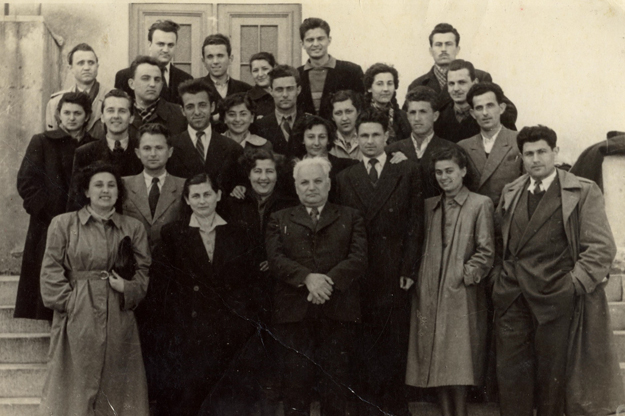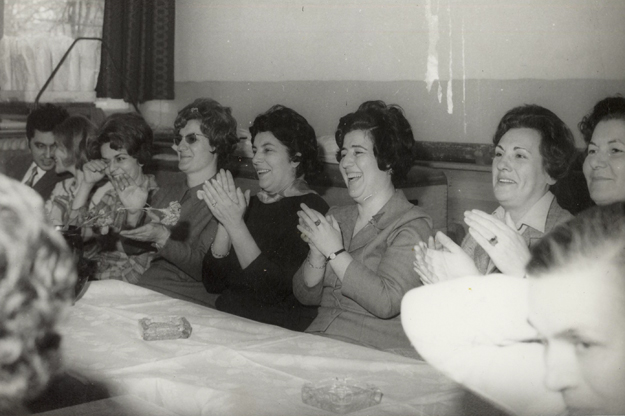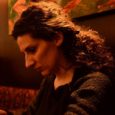The book “Didara: zivotna prica jedne Prizrenke” (“Didarja: The Life Story of a Woman From Prizren”), by ethnologist Miroslava Malesevic (published in Belgrade in 2004) is the ninth book in the series “Women’s Identity.” Last year at Prishtina’s International Literary Festival, polip, Qendra Multimedia invited Malesevic to be part of a panel discussion on ‘Freedom and Gender’ and to read extracts from her book. The selected parts that were read triggered the curiosity of readers, which, among other things, showed the need for a translation of the book.
Now translated into Albanian and published by Qendra Multimedia in Prishtina, the story of Didarja Dukagjini comes at a time of bitter political dynamics, of dealing with both the past and ourselves, as a society and as a nation. The book makes the reader travel in time and is one you can’t put down. Written in the first person singular, the narrative raises discussion of historiography, macro- and micro-history, feminist oral history, social history, collective memory, socialism, feminism and patriarchy, as well as (Albanian-Serbian) interethnic relations in the socialist period.

Didarja’s story offers us the possibility of seeing a different landscape from that which is generally dominant. After many in-depth interviews with Didarja, using oral history methodology, Malesevic shapes Didarja’s story with sequences from childhood (before WWII), adolescence (post-WWII), her career and the ideals of a communist woman (during the 1970s) and her alienation from public life (at the end of the 1980s and during the 1990s). Through this story and its different events and situations, “Didarja” explores the development of socialist modernity, especially in relation to gender emancipation, and finally the period of politicization and escalation of interethnic tensions. The book brings to the surface the mastery of conducting an interview and of writing in such a way as to reveal the personality and voice of the subject. Didarja’s life events — which go beyond the personal, social and political levels — highlight the benefits of research methodologies within the humanities. This is the context in which I read the book.
Historical research
In Kosovo, the post-WWII historiography is characterized by the political ideology of the time, and it was mainly a history from above. This historiography was largely preoccupied with big topics and in this way the microhistory, social history research and the history of the everyday (alltagsgeschichte) was considered to be of little interest. (However, I would mention here historian Sadulla Brestovci in the 1970s who suggested inclusion of narrative sources in historical research.) Historians, Albanologists, ethnologists and demographers, mainly grouped together under the Institute of Albanology in Prishtina, were faced with different forms of political oppression. In line with communist ideology and under government pressure, several facts of life during WWII were, generally speaking, disregarded; for example, the opening of the first Albanian language schools and Albanian language radio. Among such avoidances, compared with the research in rural areas, little attention was given to the urban stratum of society, the so-called sheherlinj (from Turkish şehirli – urban). Burcu Akan Ellis, in her book “Shadow Genealogies: Memory and Identity Among Urban Muslims in Macedonia,” argues that a characteristic of the sheherli was that they identified themselves based on their urban status, in multilinguality and social identity, rather than identity constructs based on a nation state or homeland that they belonged to.
I could say that the sheherli of Kosovo shared these characteristics as well. However, the difference may have been that many families from this stratum have been engaged in nationalist organizations like Balli Kombetar (National Front) or Partia Nacional Demokratike Shqiptare (The Albanian National-Democratic Party). Some of these people who held certain official positions during WWII were persecuted or killed.
The childhood of Didarja, who belonged to this stratum, and narratives of these types in general, unfold segments of a social life of a certain period, or of a certain geographic location, which suggest greater cultural diversity than was generally written about.
In efforts to achieve class equality right after WWII, the sheherli, or other social strata that have been considered to be carriers of the Ottoman legacy, were painted as ‘reactionary’ and ‘backward’ in relation to the social progress that communism promoted. As an extension of the 1980s, when political tensions came to the surface, the 1990s saw the climax of the politicization of history. History was used less as scientific debate and more as a political instrument; at times reduced to the level of autochthony of peoples, at times as an attempt to exercise political power, and sometimes also to legitimize the presence of certain peoples in certain places. In this line, marginalized groups, as long as they did not represent political competition, remained in the shadows.
After the 1999 war in Kosovo, because of a lack of microhistory and social history research (where attention is paid to marginalized groups), or because of a lack of feminist oral history (where personal stories, feelings, memoirs and events are in focus), society’s views on history are divided in several firm blocks. The protagonists of the socialist period, either as part of the government or as members of the underground resistance movement Ilegalja, are put into frames that are often too narrow to include the entire set of class and political dynamics of that period. On the other hand, scientific research in the field of history, by and large, does not include a detailed approach or focus on marginalized groups, e.g. women. Through classic research methods, like reviewing official documents and archives, one can only find one facet of history.

From personal stories and private archives (photography, memoirs, etc.), one can find new paths for discovering events and phenomena that have social, political and cultural dimensions beyond Kosovo. Women, regardless of their contribution, either at a national level or in social transformation, remain missing parts of history. After the 1999 war in Kosovo, the majority of history writing has been the history of acts of heroism (mainly by men), political liberation agreements, and political and social activism. With individual exceptions, the feminist perspective is not part of the methodology applied in scientific historical research, nor do the above-mentioned methodologies seem to trigger interest in academic circles.
Socialist gender emancipation
In relation to patriarchy, sociologist Goran Therborn in his book “Between Sex and Power: Family in the World,” argues that the biggest changes to have shaken the foundation of the patriarchal system happened during WWI, after WWII and after 1968; and through changes in legislation, communism overthrew many aspects of patriarchal domination. In Yugoslavia, active in this regard was the Antifascist Front of Women (AFW), in which Didarja was an active member of the Kosovo branch. The post-WWII period was marked by two important campaigns (among others): the removal of the veil (ferexhja or çarçafi and peçe), and literacy courses.
Both campaigns faced resistance from ‘reactionary forces’. In its beginnings in 1946, the campaign against the veil was not successful, as it was not only men who opposed the campaign but also women who could not imagine going out in public without the veil. The historian Drita Gunga Bakija, in her article “Heqja e carcafit dhe e peces ne Kosove,” (“Veils in Kosovo”) published in the Journal of History in 1983, wrote that among Albanians, popular slogans warned that “after removing the veil, they will take from us our white hats [plis],” while among Serbs slogans said, “Albanians have looked enough at uncovered Serbian women, it is our turn now to see Albanian women without the veil.” On March 25, 1951, the law that banned the veil and any kind of face covering was approved and the violation of this law was punishable by two years in prison or 20,000 dinars. Didarja, assigned to work during this period in the areas of Opoja and Gora, remembers: “From today’s perspective, for example, I wonder how this action of the removal of the veil succeeded at all – these things have shaken the entire system of values, the tradition and laws according to which, for centuries, people lived.”

Despite the work of the campaigns and the success they may have had, although socialism managed to make women part of the public sphere, it never managed to make men part of the private sphere – with, for example, the sharing of household chores. For example, the women’s magazine “Kosovarja,” from its initial publication until the early 1990s (in the book “Didarja” the year is wrongly noted as 1972), despite its general aims of women’s emancipation and promotion of successful women, promoted the general conviction that it is a woman’s duty to take care of children and household. Regardless of efforts toward emancipation, the socialist model of the modern family (nuclear family) and the education of women did not a priori mean (and still does not mean) that men take their half of responsibility for the household and childcare. In this context, Didarja said: “From the beginning, somehow it was understood that this was only my duty and not a joint duty, taking care of the house being cleaned, clothes being washed, that every day we would have something warm for lunch and ‘ready to eat’ … I believe neither he nor I thought that in this aspect something should be modernized, that we cannot be equal as long as this patriarchal household labor division existed, because from this actually everything starts.”
Gender concepts kept being divided based on biological determinism, through which labor was also divided. In the public sphere, Didarja explains, the direct resistance to greater inclusion of women in leadership positions did not come from the people, but rather from government power structures where men dominated. Some of the employed women, because it was difficult to handle both work outside and work inside the home, hired other women to assist them in household work. The socialist part in this respect was that some of the helping women had social security paid by their employer, a practice that should exist today as well.
Alienation and distancing from public life
Regardless of the progress achieved during the socialist period, the worsening of the political situation in Kosovo started right after 1981. In the mid-1980s, dissatisfaction and inter-ethnic tensions rapidly rose to the surface. Furthermore, the Serbian media became the catalyst of nationalism. In a period where everything was divided on an ethnic basis and oversimplified into ‘black and white,’ the story of Didarja shows the grey zone in between. This story manages to ruin the defining and reductionist frames of ethnic belonging, a frame within which it operated at that time. Through the landscape that the story presents, we see what it meant not to align oneself, and to refuse to belong to certain nationalist blocks. Before the beginning of the war in Kosovo, at the request of her children, Didarja, together with her husband, moved to Belgrade. During those years, Didarja tried to fill the void: “Sometimes I wish to take a walk in the streets of Prizren, even secretly, hidden behind the veil, like before, so nobody could know me. But quickly I come back, I know that this is not possible. I have replaced Prizren Castle with Belgrade’s Kalemegdan and this is not bad – it is not the same, but nothing is the same anyway. After all that has happened, I can say that it means a lot to me that our kinship relations and many years of friendships, despite ruined inter-ethnic relations, have remained untouched.”
Books like “Didarja” just like the 2011 autobiography of Bekim Fehmiu, “E shkelqyeshme dhe e tmerrshme” (“Splendid and Horrific”), make it possible for us to better see lives lived in a recent historical period. They offer us the possibility of seeing and understanding a plurality of meanings of certain issues in certain periods, or for certain individuals, actors of those periods. Consequently, this type of viewing and understanding makes possible a truer dealing with the painful past. A story like Didarja’s, or the work of ethnologist Malesevic, enriches the mosaic of historic and cultural research during the period of socialism in Southeast Europe.
This article is a version of the afterword of the book “Didarja: life story of a women from Prizren.” The promotion of the book “Didarja” will be held at 18:00 on Thursday (October 20), at Kino Lumbardhi in Prizren, organized by Qendra Multimedia and Lumbardhi Foundation. A discussion with the book’s author, Miroslava Malesevic, and its translator into Albanian, Shkelzen Maliqi, will be moderated by Elife Krasniqi.
Photos courtesy of Miroslava Malesevic.




